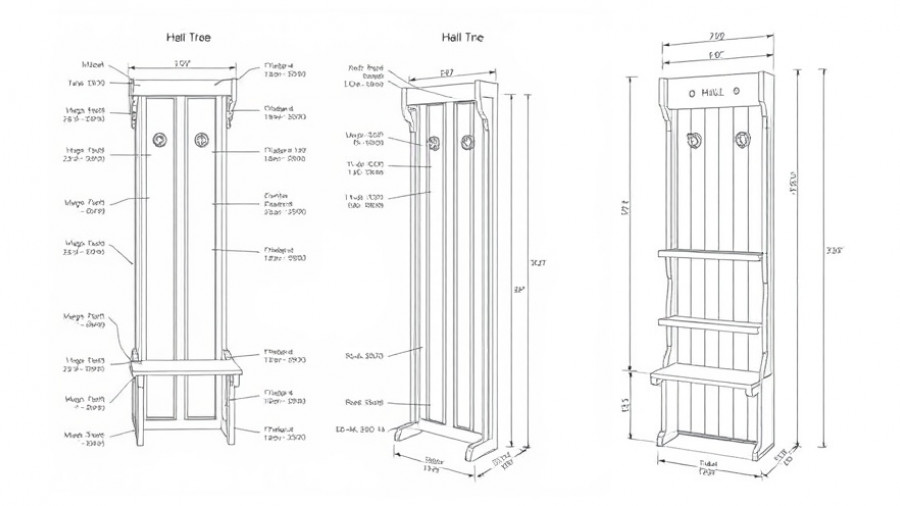
Why Winterizing Your Hose Spigot is Essential
As winter approaches, the responsibility of maintaining your home extends beyond cozy blankets and warm mugs of cocoa. If you live in a cold climate, winterizing your hose spigot is a crucial task. Neglecting this simple chore can lead to significant water damage as the temperatures dip below freezing.
“Once winter temperatures arrive, the water inside hose spigots can freeze, causing pipes to burst,” explains master plumber Aaron Adams. “It’s one of the most common issues we deal with.” The risk doesn’t just apply to areas with heavy snowfall; homeowners in milder climates like Georgia also face unprepared emergencies because of unexpected cold snaps. This inevitability emphasizes the importance of taking preventive measures.
Understanding the Risk of Frozen Pipes
When water freezes, it expands, creating pressure within your plumbing system. The results can be disastrous: cracked pipes, unexpected floods, and hefty repair bills. “Most homeowners don’t call until the ice melts, and that’s when the leaks show up,” Adams warns. The average cost to repair a frozen pipe can vary widely, with estimates ranging from $200 to $300 depending on the damage and location. However, that’s a shadow of the myriad costs associated with water damage that could be avoided through simple preventive measures.
Step-by-Step Process to Winterize Your Hose Spigot
Winterizing your hose spigot is easier than you might think. Armed with just a few tools, you can save yourself trouble and expenses down the line. Here’s a straightforward guide:
- Locate the Shut-off Valve: Start by turning off the valve inside your home that controls water flow to the hose spigot. This is typically situated near the spigot itself.
- Drain the Hose Spigot: After turning off the valve, head outside and open your hose spigot. Let any remaining water drain out completely. Once no more water drips out, close the spigot.
- Disconnect Hoses: Remove any hoses attached to your spigot, allowing them to drain fully before storing them away for the winter.
- Install Insulation: Consider wrapping the spigot with insulating materials like foam covers or even rags for a boost against the cold.
- Cover the Spigot: Installing a frost-proof cover is a great way to secure your spigot against harsh winter conditions. This provides an additional layer of protection and peace of mind.
Following these steps might feel tedious, but engaging with this task today saves you potential headaches tomorrow.
What About Frost-Proof Spigots?
If you're lucky enough to have a frost-proof spigot, you still want to perform basic winterization checks. While these spigots feature self-draining elements that significantly mitigate the risk of freezing, they are not foolproof. Ensure that hoses or other attachments do not obstruct drainage.
"A frost-proof spigot’s handle coming out at a 90-degree angle from the wall is a good sign that you have this model," Adams explains. It's always wise to check and confirm whether your equipment is up to par before letting winter take its toll.
Additional Tips for Effective Winterization
As you winterize your hose spigot, it’s also beneficial to check your overall plumbing system for potential vulnerabilities. Look for leaks or weaknesses that could lead to issues when temperatures drop. Adopt these additional helpful practices:
- Ensure entire plumbing systems are reviewed for soundness before winter.
- If you’re not confident managing plumbing yourself, consider hiring a professional for peace of mind.
- Storing hoses indoors in a neat way can prevent damage while also keeping them handy for spring.
Transform Winterizing Into a Tradition
Think of winterizing as a family affair. Grab your children, partner, or roommate to help tackle these tasks together. Not only does this promote teamwork, but it also instills in younger family members the importance of home maintenance. Embrace this partnership, and each cold-weather preparation will become an opportunity for shared learning and bonding.
Conclusion: Take Action Today!
Winterizing your hose spigot is a simple yet crucial task that can prevent costly repairs and catastrophic water damage in your home. Whether you live in a snowy climate or one that only occasionally dips below freezing, the wisdom to prepare can save you thousands of dollars in the long run. Make this winterization ritual a part of your autumn prep list, and savor the peace of mind that comes with knowing your home is secure against the elements.
Don't wait for Jack Frost to catch you off guard! Start your winterizing preparations today to enjoy a worry-free season.
 Add Row
Add Row  Add
Add 




Write A Comment